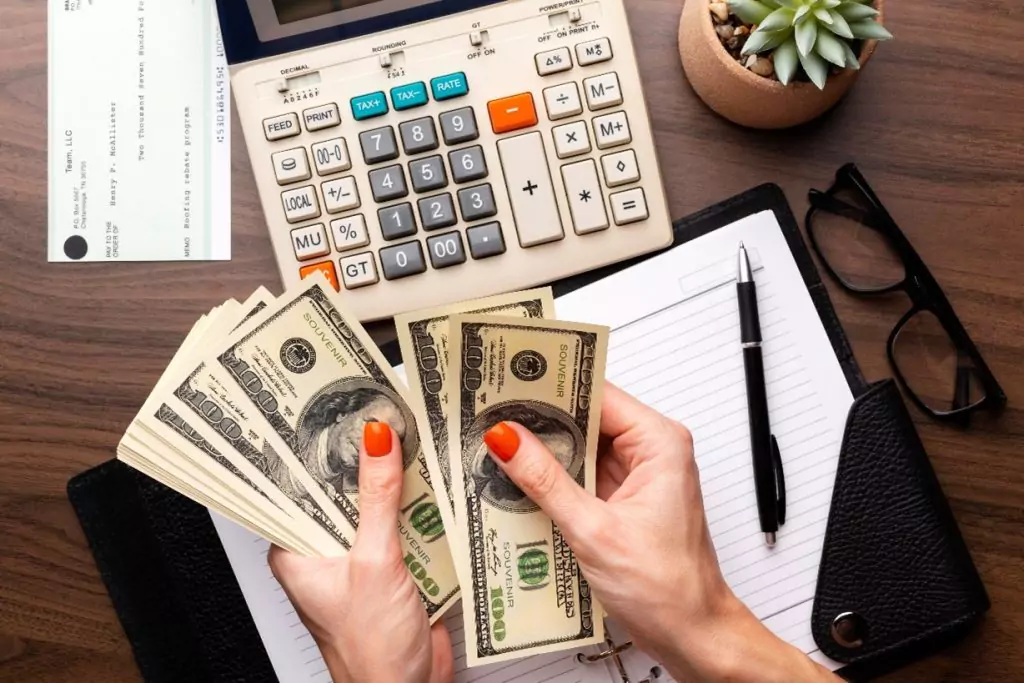
Whether you’re a business just starting or have some experience under your portfolio in the debt collection market, outstanding invoices can negatively affect your business’s cash flow and revenue. This issue makes you wonder how to improve small business debt collection with accounts receivable.

Therefore, businesses need to monitor the accounts receivable they are accumulating. However, converting all accounts receivable into cash in b2b collections for business cash flow can also harm the company. Thus, a core analysis of the business’s functional operations and business cash flow needs to be assessed to determine how much of the accounts receivable needs to be converted into business cash flow so that the company can fulfill its requirements, such as paying bills and releasing salaries while focusing on debt management and small business debt collection.
To determine why business cash flow is essential for small business debt collection, it is necessary to have a good grip on the terms to evaluate how to improve a business cash flow with accounts receivable for commercial debt collection.
Money tends to revolve and rotate on multiple levels in any business infrastructure. Regarding small business debt collection, accounts receivable are outstanding invoices to be paid by the relevant customers. Once these invoices get cleared and the business receives the cash, this, in turn, leads to the flow of money itself and, hence, the name, business cash flow.
Now, on paper, it may not seem as big a deal. Still, even the most minor constraints on the business cash flow, especially in accounts receivable, can lead to significant delays from the consumer and the business end. That is why business cash flow tracking is considered to be of utmost importance in small business debt collection as many other variables are dependent on it, such as:
Operational Expenditures refer to the expenses made to keep the business running optimally.
Capital Expenditures involve funds the company allocates for future investments in physical assets, such as real estate, licenses, and equipment.
Investment reserves are funds the company sets aside for future investments. Positive cash flow gives the company financial flexibility, which can lead to a positive output in the investment reserves.
Investing is all about faith and the data backing up the business. An optimal cash flow rate instills confidence in investors. A company that maintains a positive cash flow despite market fluctuations has a higher chance of attracting investors and retaining current ones
When figuring out how to manage cash flow for a business with accounts receivable, a risk assessment has either occurred at the back end or is about to be conducted. Such an analysis is of the utmost importance as it shows how much funds the company has saved for emergencies.
Therefore, positive business cash flow is a benchmark companies have set to incorporate into their daily operational workflow for optimal business debt collection. This indicates that money earned is better than money spent as long as the required expenses for growth and stability are being made.
Although every business strives to achieve as much business cash flow as possible for small business debt collection since it offers them flexibility and security regarding delayed accounts receivable and, ultimately, bad debt, keeping them in your arsenal might be a good idea. Especially in a world where credit has overtaken cash in most cases to the extent that only 10% of Americans were observed using cash in the ending quarter of 2023 for purchases, accounts receivable provide a layer of flexibility to customers.
Although such flexibility is vital and fruitful for healthy relations between the involved social institutions, the dependence of such outstanding payments on the business cash flow must be addressed for small business debt collection. Therefore, a core functionality assessment will help companies uncover how to improve their business cash flow with accounts receivable and help manage just how much the company requires.
Image Courtesy: FreepikTherefore, initiating commercial credit recovery without strategies can cause a decline in the clientage of the business, which will give rise to more monetary problems. While competent commercial credit collection agencies such as Cedar Financial prioritize cordial communications with user-centric approaches that enhance the customer experience while maintaining an optimal recovery rate, businesses can keep an eye on the following tactics to ensure a positive customer experience.
Instead of having to pay upfront for the services or products a customer purchases, the option of having credit on board tends to generate more sales and attract more clients. While accounts receivable generate panic in the company regarding how to improve a business cash flow with accounts receivable, these same receivables can accumulate interest over time, which can be beneficial for the positive cash flow of the business.
In small business debt collection, a significant pain point for businesses involves debt collection amid many potential uncertainties. Therefore, some companies may turn a blind eye to pending accounts receivable. A repeating trend in such cases causes business cash flow to decline. Such cases can be avoided if proper protocols are observed to find a solution to the issue of how to improve business cash flow with accounts receivable for small business debt collection.
Invoice discounts on early payment have been a long tradition that companies use to improve their accounts receivable. Especially for small business debt collection, such strategies can instill a layer of urgency in the client’s mind to ensure that the accounts receivable process goes smoothly and sound for enhanced business cash flow in case of small business debt collection.
Yet figuring out how much incentive to give can take a lot of work since too much discount can negate chances of generating healthy revenue in the long run for business cash flow. While the discount offered to accelerate invoice payments for accounts receivable on time may differ from business to business and the industry they are dealing with, an early payment incentive ranging from 1-2% is usually considered a healthy industry standard for small business debt collection.
Keeping the customer’s requirements in mind is integral to client assessment in a business benchmark layout for business cash flow in small business debt collection. Another aspect of client assessment and customer segmentation involves doing a thorough check on the clients themselves without overstepping any privacy boundaries, as violations of regulations such as the Fair Debt Collection Practices Act (FDCPA) and small business debt collection protocols can give birth to an array of long-term problems. This research will be used in customer segmentation to analyze the number of accounts receivable linked to a customer and their payment history for enhanced business cash flow in small business debt collection.
Grouping customers in terms of their pending invoices and transaction history is vital for estimating how to improve a business’s cash flow with accounts receivable in the case of small business debt collection. It helps prioritize which cases need to be tackled urgently with limited resources and which cases can be put on the back burner for commercial collections.

Although considered a last resort, revoking credit terms can be a strict and stern way to ensure customers pay their outstanding invoices in small business debt collection. The reason why customers are left with a bad taste in their mouths when getting notified that their credit terms have been invoked is that it seems that the customer is no longer authorized for any purchase on credit and, therefore, must pay an upfront cost with some flexibility in the time range. However, the time allocated for this upfront is intentionally kept small to convey the severity of the matter itself and incentivize business cash flow in small business debt collection.
Such cases require an area of expertise that most businesses may not have, as communication between such channels is considered sensitive and can hurt the sentiments of some customers if not dealt with properly. Businesses and clients requiring third-party services should look out for this in collection agencies. Cedar Financial offers impeccable customer dealing, business cash flow optimization, accounts receivable, and small business debt collection. Such commercial collections policies and communications ensure that credit revoking terms are clearly explained to the respective client and that debt recovery solutions for small business debt collections are available.
The workflow of such instances usually requires a business to do its due diligence and make the best possible efforts to get the customer to comply with their collection policy, especially in small business debt collection for business cash flow. Credit reporting to the credit bureau is done if such efforts are brushed aside. This will negatively impact the customer’s credit score, so such consequences should be communicated to the client beforehand.

